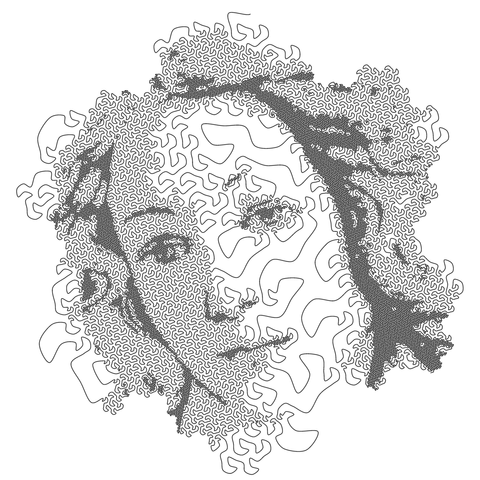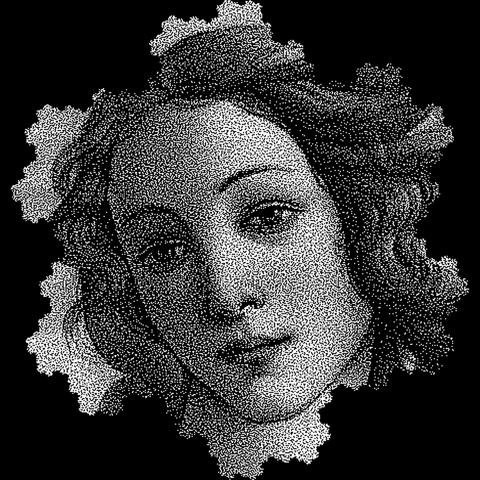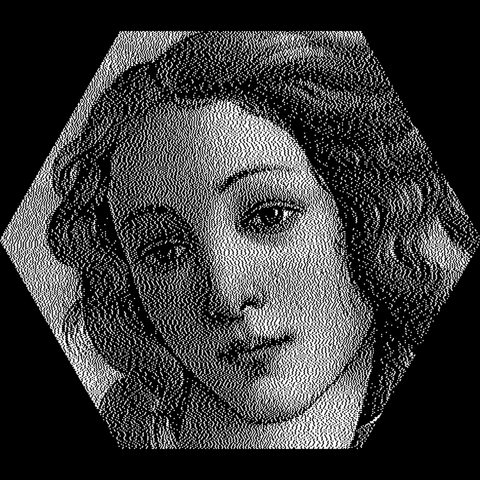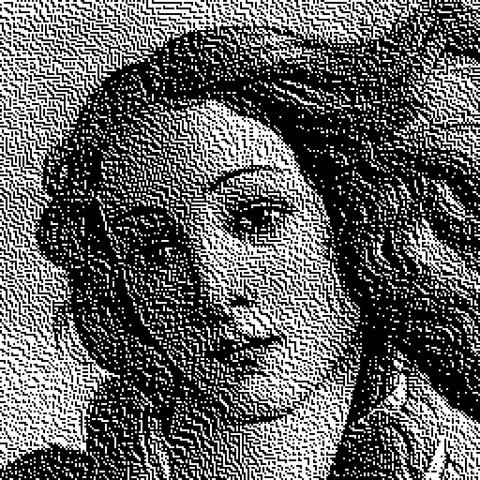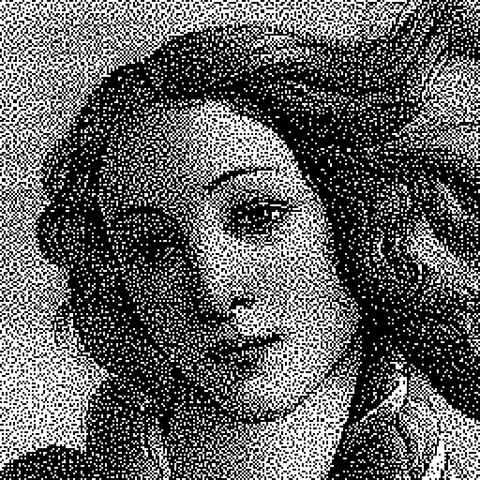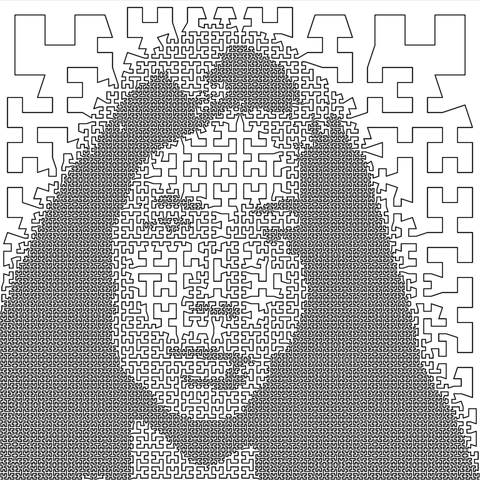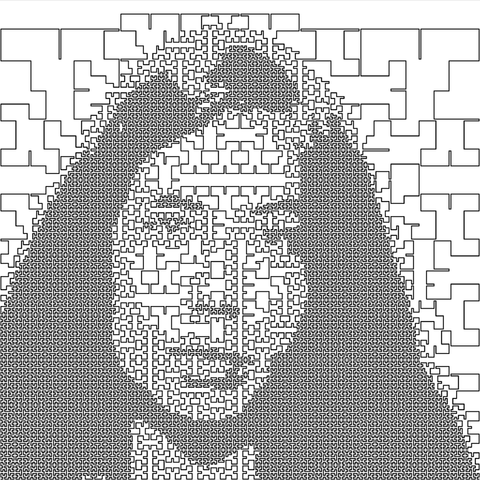The previous demo made me dig deeper into dithering algorithms. It's something I should have done years ago, as I've been using simple random dithering now and then, and I hadn't even thought of gamma correction. One algorithm in particular caught my eye: Riemersma dithering, which uses the Hilbert curve. Compared to the usual matrices for error diffusion, the curve approach seemed easier to implement in some ways, as it has fewer edge issues.
More interestingly, it struck a chord with my earlier experiments with space-filling curves in image processing. So it was a kind of familiar territory, but it also seemed esoteric enough that I could imagine making some new discoveries. For example, play with other plane-filling curves besides the Hilbert.
The first image uses the boustrophedon curve, which makes the vertical wave patterns I recall from a number of non-dithering demos. The second curve is what I call the diagstrophedon, a diagonal zig-zag starting from the top left corner, and I think its wavy artefacts make a nice match for Venus's hair.
Then in image 3 we have Hilbert, which doesn't seem to make any particular artefacts, and I guess that's a good thing for dithering. Finally 4 uses the Peano curve, which makes some fun wiggles in light areas.
#dithering #riemersmadithering #stippling #halftoneart #raster #pixelart #hilbertcurve #peanocurve #planefillingcurve #spacefillingcurve #pythoncode #opengl #algorithmicart #algorist #mathart #laskutaide #ittaide #kuavataide #iterati

